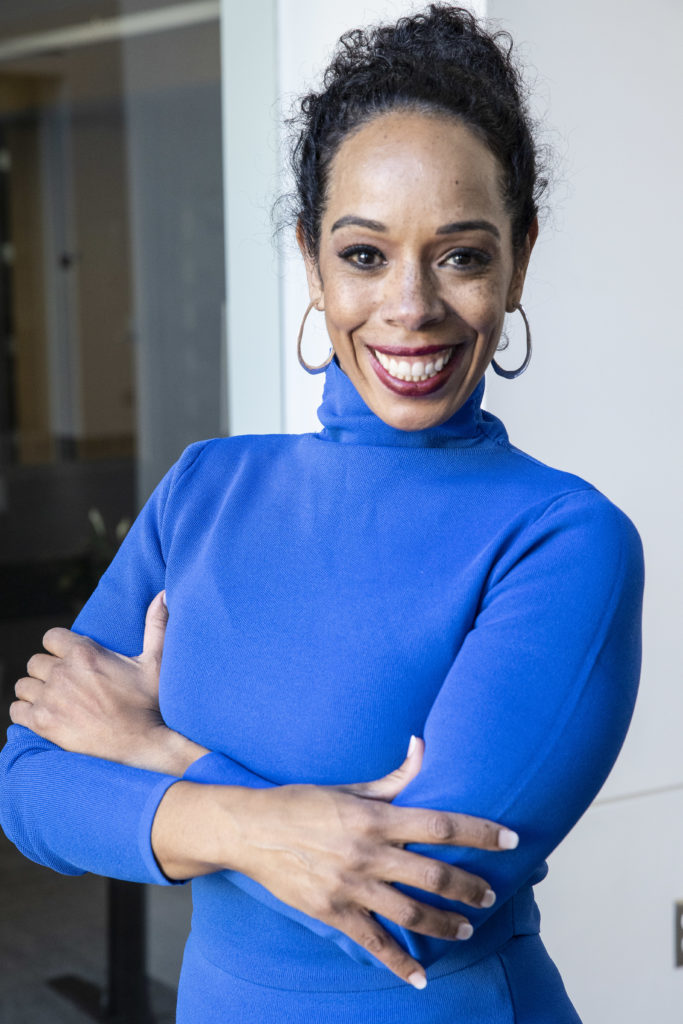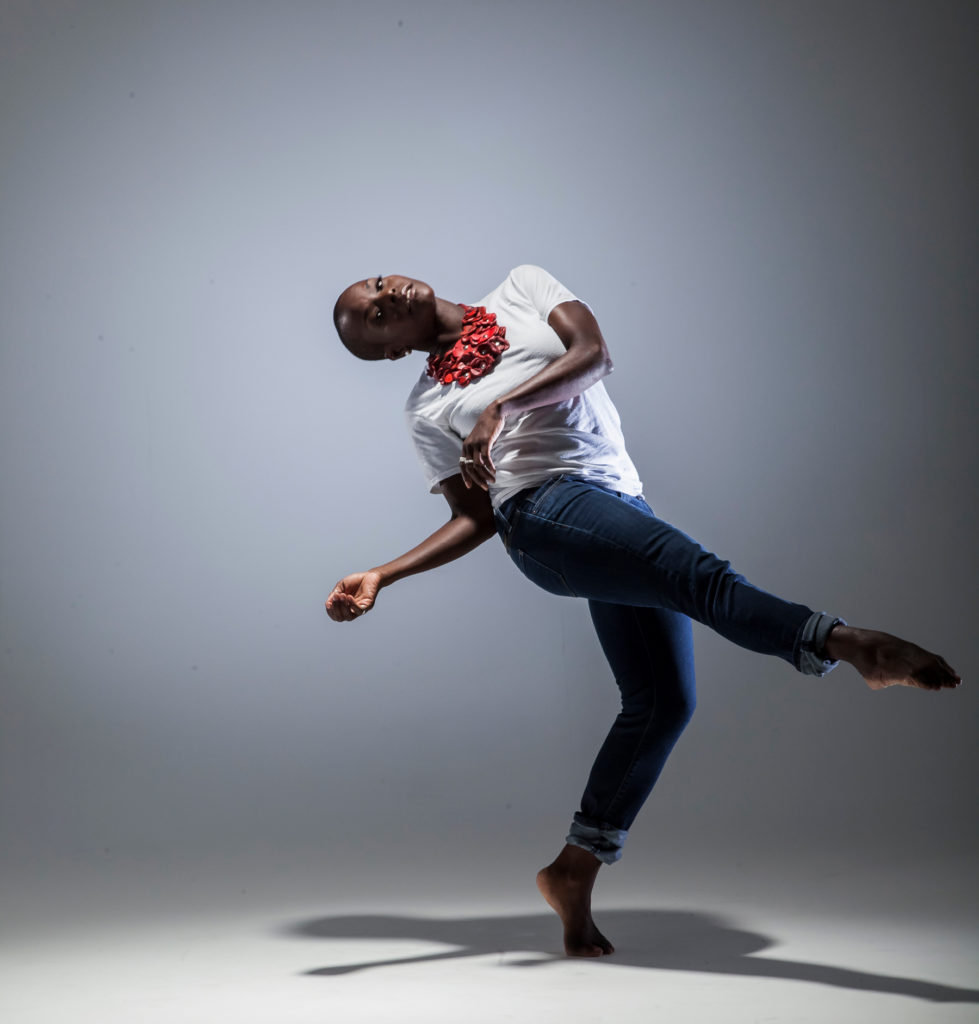
These days, it’s not unusual to see the word “welcoming” in a dance studio or dance institution’s messaging or marketing materials. Indeed, as dance education evolves to recognize the ways in which dance studios aren’t always healthy spaces and have historically excluded certain dancers, creating spaces that are truly welcoming to all is a much-needed step.
But what does a welcoming dance studio look like? And is “welcoming” enough?
Last year, Lincoln Center Activate launched a yearlong investigation into the idea of “radical welcoming,” led by educator and #HipHopEd creator Dr. Chris Emdin. We asked Emdin and three dance educators what a “radically welcoming” dance studio looks like to them.
Dr. Christopher Emdin is the creator of the #HipHopEd movement, an initiative that brings hip-hop–based learning to STEM, literacy and beyond. He is an associate professor at Columbia University Teachers College, where he also serves as director of the science education program and associate director of the Institute for Urban and Minority Education.

“All teaching begins with radical invitations of a student into the world of the educator and of the educator into the world of the student, and the reimagining of the classroom to be a space where there are convenings of souls that see the best in each other. You radically invite someone in when you lay down all the pretense, all the ego, all the accolades and you meet them on their cultural turf. I’m not saying get rid of your expertise. However, that is not all of you. It’s putting the thing you’ve defined yourself by on the side for a minute, and laying yourself bare. You can’t notice another person deeply until you shed yourself of all the lenses that obscure the vision of the other. And then comes the invitation, and then the welcoming.
“See the dancer and who they are, and convince them that what they already do is dance. And then once that understanding is there, arouse in them the passion to pursue the craft more deeply. Your job is to awaken the dancer in them.
“The largest thing that gets in our way is not our knowledge of what is right. It’s not our souls telling us out loud ‘Do something different.’ It’s history and tradition telling us this is the way it’s always been done. Because it’s been done the exact same way forever does not necessarily mean it’s the best way to do it. And teachers must bend themselves to the needs of the students. That’s how you make yourself welcoming. The second piece of it is fear. ‘If I do this this way, what will they think of me? What will the parents think? What will the kids think?’ Because even as we move towards radical welcoming, we have young people who have been conditioned to be unwelcomed. And so you take the step to do something radically different, and you’re going to get some response, even from the student that you’re trying to open up the space for. And I think you have to have a willingness to endure fear on your part, but also fear on theirs. You’ve got to have the patience to see through your fear and their fears, until possibilities open up. When possibilities open up, then we create new spaces. And that’s when the magic happens.”
Krishna Washburn is dancer, choreographer and teacher, and the artistic director of Dark Room Ballet, a specialized dance curriculum for blind and visually impaired dancers.

“If you’re not involved in audio description, you can’t be radically welcoming to blind, visually impaired and disabled people. Audio description is the number-one most important thing that dance teachers can invest their time into.
“I don’t ever stop talking when I teach. I describe every movement completely. I never stop speaking and I do it in rhythm with the music in order to keep the patterning. When you can’t watch, you need something like that. What is the replacement for the mirror? It’s the taped floor, and the teacher’s voice—you have to have both.
“I am writing a dance dictionary; my students get a vocabulary email before every class. So that way, when they hear words, they have movement concepts in their mind that they can apply. The dance dictionaries that currently exist are not really meant for students. How do you explain a tendu to somebody who doesn’t even know what a pointed foot is? Remove the stigma of having no prior knowledge; remove the stigma of needing to listen and practice continually as opposed to understanding in a split second. That’s not how human beings develop deep learning, regardless of whether they have a disability or not.”
Dr. Nyama McCarthy-Brown is an assistant professor at Ohio State University, and the author of Dance Pedagogy for a Diverse World: Culturally Relevant Teaching in Research, Theory, and Practice.

“The issue of welcoming students into a space is a huge part of how whiteness is upheld in dance spaces. So it’s not surprising that one might be interested in examining how students are welcomed into a space or not.
“I had students go into the community for a West African dance class. And their biggest takeaway was that everybody was so nice, which was great and terrible all at once. They were, like, surprised in a dance space to have nice people. It speaks to the fact that they had been indoctrinated into dance spaces that were focused on competition and looking at the mirror and how you can be better. And because you’re focused on yourself, you’re not welcoming your neighbor into the room. And so what happens when you have a different type of experience where people are affirmed for their ability to see people and nurture people and love on people? What happens when you give explicit directives: ‘Hey, can you go and bring this person into the room?’ A lot of times students need that direction to be stated explicitly. Sometimes I will even say, ‘Go greet three new people’ or ‘Go find someone you have something in common with.’
“One of the things that I do with my students is fieldwork assignments, where you go into another dance community and you just observe. We observe how newcomers are treated. I can go to a church, I can go to a dance class, I can go to a library, and I make note of places that I am happy to enter into. And I make note of what happened to make me feel comfortable or welcomed. And then I look for ways to incorporate those things into my classes.”
Hope Boykin is a dancer, choreographer and educator who has served as artist in residence at the USC Glorya Kaufman School of Dance and currently serves as artistic lead for the Kennedy Center Dance Lab. She has participated in Lincoln Center Activate’s programming on the theme of radical welcoming.

“It’s important that we meet people where they are. Even though we have an expectation, we have to remind ourselves that our expectation should be for their well-being, for their knowledge, for however they’re going to gain from what we have to share. I don’t believe that we need to lower our expectations of what they can bring. But we have to make sure that we’re focusing on where they are, and then building them up from there.
“I believe that what the ‘radical’ adds to this welcoming idea is for us to check ourselves, like really hold ourselves up to the mirror. How do I bring my information from the past forward so that I can continue to move forward? We always need to know history so that we don’t repeat the things that didn’t work, and then build with new ideas, new paths—what is working, and what continues to work.
“We have to be prepared as educators to be flexible. We have to be so prepared that if we walk into the room on that particular day and it doesn’t work, we need to be able to change. Sticking to your plan is for the birds.”




